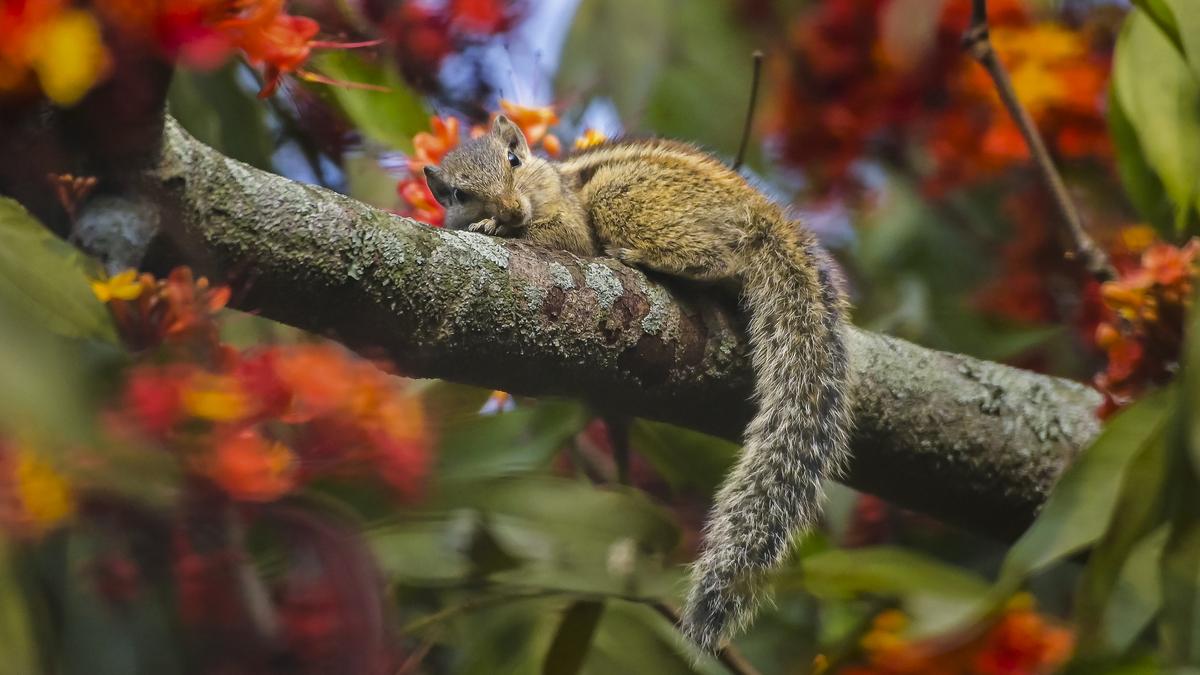
The Secret Life of Squirrels: How Urban Nests Tell a Story of Survival and Coexistence
“Where does a squirrel live?” I asked a friend recently.
“In a tree? Maybe a hole in it?” came the uncertain response.
Most of us imagine squirrels as woodland creatures stashing nuts in hollow trees. Few realize these little rodents are also skilled nest-builders, creating intricate homes not unlike birds. I only discovered this firsthand when a squirrel began nesting on my bathroom windowsill—a messy but intricate structure of twigs, grass, and bits of cotton. Inside it, a squirrel quietly made her home.
Why Do Squirrels Build Nests?
According to Sreejith Sivaraman, a PhD researcher at the Kerala Forest Research Institute, squirrels build nests primarily for protection—from predators, harsh weather, and for thermoregulation. As urbanisation spreads and trees with natural cavities disappear, squirrels adapt by nesting in human structures and tree branches.
“In the wild, squirrels typically choose hollow trees or cavities,” says Sivaraman. “But in urban environments, they repurpose materials like plastic, dry leaves, and twigs to create nests in buildings or any available crevice.”
Species-Specific Nesting Habits
Indian palm squirrels, common in many Indian cities, are known to shift from traditional cavities to manmade spaces. Nesting materials and patterns vary between wild and urban squirrels. While forest dwellers use natural materials, city squirrels adapt to what’s accessible.
The female squirrel builds a nest shortly after mating. Within two days, she creates a space to raise her young. The gestation period is around 40–45 days, after which 2 to 4 tiny, pink, hairless babies are born. In two weeks, their hair grows, and their ever-growing incisors start emerging—teeth that must be kept in check by constant gnawing.
Ingenious Builders
Giant squirrels take nesting to the next level. They craft multiple nests high in the canopy, completing each one in mere hours. This is a clever strategy to mislead predators. If a threat is sensed, the mother can move her babies from one nest to another.
Urban Challenges
Urban life is not easy for squirrels. The loss of green spaces and natural habitats forces them to adapt in real-time. “These squirrels didn’t migrate from forests—they’ve always been here. But now, they’re adjusting to concrete jungles,” says Sivaraman.
How Can We Help?
One simple yet powerful answer is: co-existence. As humans, we must protect microhabitats—trees with cavities, dry logs, and urban greenery—that serve as homes for creatures like squirrels.
“A healthy tree, from an ecological point of view, is one with imperfections—cracks, holes, and deadwood,” explains Sivaraman. “These are critical habitats.”
A Personal Tale of Coexistence
The squirrel on my windowsill, whom I’ve named May, is now raising her second litter there. Initially startled by my presence, she has grown more confident. Our silent, shared understanding teaches me about adaptation and harmony.
As we reshape the world around us, perhaps we can also reshape how we live in it—together.















